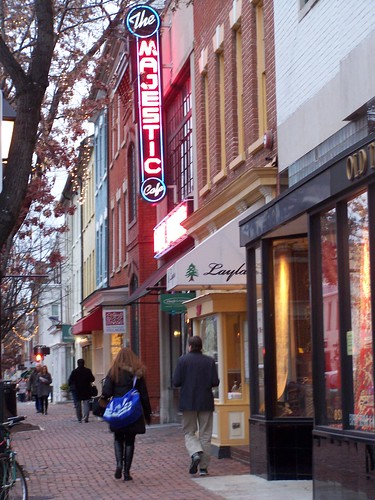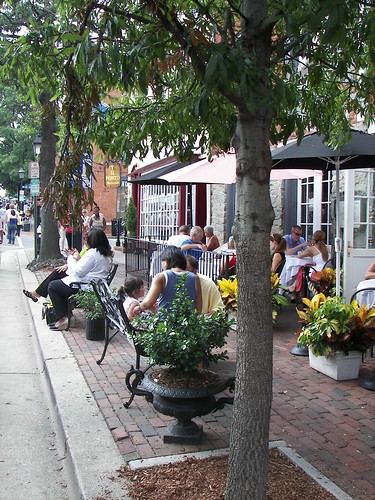Destination development and marketing and the NTHP "Distinctive Destinations" program
Chapel Hill, N.C. – Well-preserved historic districts and a bustling downtown are some of the assets in a city nicknamed the "Southern Part of Heaven."
Colorado Springs, Colo. – The historic Rocky Mountain town has fabulous views of Pikes Peak from almost everywhere in town.
Dandridge, Tenn. – Set in the foothills of the Great Smoky Mountains, the southern Appalachian town has "a welcoming small town spirit and a charming historic downtown."
Eureka, Calif. – The beautifully preserved Victorian seaport on the state's northern coast boasts "a lively Old Town, the Carson Mansion -- one of the most photographed homes in America -- and nearby forests of majestic old growth redwoods."
Muskogee, Okla. – Once the unofficial capital of Indian Territory, the town has a multi-cultural history that blends Native American, African American and Euro American influences. It celebrates that history with a number of festivals in its vibrant downtown.
New Bedford, Mass. – Scenic beaches, maritime history, architectural and historical riches and a growing arts community make this former whaling port an attractive place.
Paducah, Ky. – The river town has thriving historic districts with one-of-a-kind shops and eateries. It's a community that "creatively celebrates its cultural and artistic heritage."
San Angelo, Texas – "A bustling downtown historic district and vibrant cultural offerings" exude authentic Old West ambiance.
Saint Paul, Minn. – "Visitors can browse the quaint shops of Grand Avenue, dine in the strikingly restored warehouse district, or be awed by the stately mansions along Summit Avenue."
Sheridan, Wyo. – The town has a lively Main Street commercial district, plus lots of recreational opportunities in the shadow of the Big Horns.
Sonoma, Calif. – "The town offers all the perks of being in the heart of wine country, with the added benefit of a laid-back vibe that complements the award-winning wine and food."
Note that I think visiting these kinds of places are incredibly important learning opportunities for people involved in neighborhood, commercial district, and urban revitalization, because you get to see how better functioning places actually work and they give us hope that with the right techniques and programs, we can do the same in our own communities.
HOWEVER, one problem is that a lot of time there is a kind of parochialism about this. For example, people in big cities don't see the opportunity in learning from smaller cities, because of the size difference between the communities.
I argue that people are missing the point. What they should be comparing is not the overall size of a city, but the nature of the "unit" under study, in this case, a commercial district, a neighborhood, a downtown/central business district.
Most neighborhoods and commercial districts are similarly sized, regardless of the total size of a particular city. Similarly, while downtowns may be significantly different in terms of size, the how and why of their function is roughly the same, even if particulars such as the existence and nature of transit service, the type of industries located there and in the region, level of tourism, etc., do in fact differ.
I find that I can learn from any community, large or small, and that big communities can learn from smaller communities, and vice versa.
The only thing I see significant differences on are (1) level of poverty; (2) crime, particular murder; and (3) the level of urban abandonment, which may have been accentuated by riots and other forms of unrest.
But hey, how Petersburg, VA's downtown was decimated by a tornado, or how a Colorado community's commercial district was destroyed by a crazy man who created his own tank and then demolished most of the downtown buildings before he was stopped (he was shot to death by the police) have learnings to offer even big cities...

Labels: cultural heritage/tourism, historic preservation, tourism, urban design/placemaking




0 Comments:
Post a Comment
<< Home